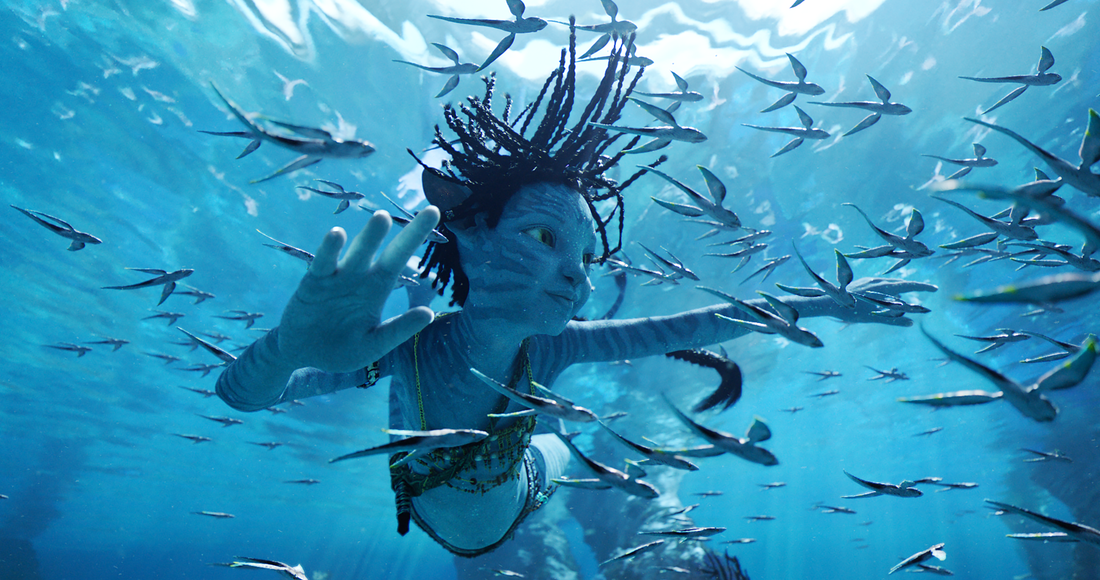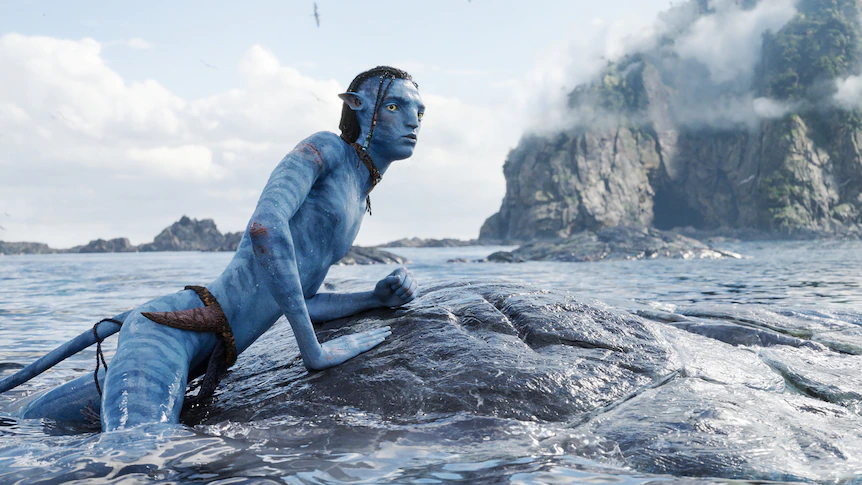Movie Review: “Avatar: The Way of Water” Is What the Theatrical Experience Was Made for
James Cameron returns to Pandora, and to the ecological themes and visual bedazzlements of his 2009 blockbuster in the new “Avatar”.

James Cameron wants you to believe. He wants you to believe that aliens are killing machines, humanity can defeat time-travelling cyborgs, and a film can transport you to a significant historical disaster. In many ways, the planet of Pandora in "Avatar" has become his most ambitious manner of sharing this belief through the power of cinema. But is it even possible, in this increasingly difficult era of distraction to leave everything in your life behind and immerse yourself in a film experience? ? Way back in 2009, “Avatar” arrived on screens as a plausible and exciting vision of the movie's future. Thirteen years later, “Avatar: The Way of Water” — the first of several long-awaited sequels directed by James Cameron — brings with it a ripple of nostalgia. The throwback sensation may hit you even before the picture starts, as you unfold your 3-D glasses. When was the last time you put on a pair of those? Even the anticipation of seeing something genuinely new at the multiplex feels like an artefact of an earlier time, before streaming and the Marvel Universe took over.
There are many words one could use to describe the heightened visual quality of James Cameron’s original “Avatar” — words like incandescent, immersive, and bedazzling. But in the 13 years since the original movie came out, the word I remember it best by is ‘glowing.’ The forest and floating mountain landscapes of Pandora had an intoxicating fairy-tale shimmer. You wanted to live inside them. The first movie fused Cameron’s faith in technological progress with his commitment to the primal pleasures of old-fashioned storytelling and the visceral delights of big-screen action. The 3-D effects and intricately rendered digital landscapes — the trees and flowers of the moon Pandora and the way creatures and machines swooped and barreled through them — felt like the beginning of something, the opening of a fresh horizon of imaginative possibility. At the same time, the visual novelty was built on a sturdy foundation of familiar themes and genre tropes. “Avatar” was set in a fantastical world populated by soulful blue bipeds, but it wasn’t exactly (or only) science-fiction. It was a revisionist western, an ecological fable, a post-Vietnam political allegory — a tale of romance, valour and revenge with traces of Homer and “Star Trek” in its DNA.

James Cameron is never leaving Pandora. That much is certain after seeing “Avatar: The Way of Water”. In the past, the director has teased the idea of making smaller, more personal projects after each of his big blockbusters. But “The Way of Water” clarifies that Cameron no longer needs to leave the confines of this (virtual) extrasolar moon in the Alpha Centauri system to create something closer to the heart. He can bend Pandora to his will, and now he’s bent it to make what might be his most earnest film to date. Cameron has always been an artist divided: equal parts gearhead and tree hugger, swaggering stud and soft-focus softie. That’s the secret of his success as a showman. He has the authenticity and know-how to sell all that fake movie science and testosterone-fueled dialogue (not to mention the perversity and skill to pull off creatively violent set pieces), but he uses them toward explicitly emotional (read: family-friendly) ends. “The Abyss” (1989) nearly drowns in scientific jargon and macho bluster until it becomes a sweet movie about salvaging a failing marriage while peace-loving, glow-in-the-dark sea aliens save the Earth. “Titanic” (1997) is one-half wide-eyed teenage love story, one-half gnarly-death demo reel.
Let’s come back to Pandora
Before we meet the blue, bi-ped beings — in a sequence that has the quiet awe of a nature documentary — we are brought up-to-date with the characters from the first movie, whom we may have forgotten about. Jake Sully, the conflicted U.S. Marine played by Sam Worthington who was the hero of “Avatar,” has remade his life among the Na’vi. Like them, he is now tall, slender and blue, with a mane of dark hair and a braid that connects him to members of other species and is fluent in Na’vi. Jake and Neytiri (Zoe Saldaña) are raising a brood of biological and adopted children, whose squabbles and adventures bring a youthful energy to the sometimes heavy, myth-laden narrative. There are four Na’vi kids, a pair each of brothers and sisters. Neteyam (Jamie Flatters), the older son, walks dutifully in Jake’s brave shadow. At the same time, his younger brother, Lo’ak (Britain Dalton), is a rebel and a hothead, looking for trouble and often finding it. Their sisters are the adorable Tuk (Trinity Jo-Li Bliss) and the teenage Kiri, whose birth mother was the noble human scientist Grace Augustine. One of the films’ genuinely uncanny effects is that Sigourney Weaver, who played Dr Augustine in the first film, plays Kiri in this one, her unmistakable face digitally de-aged and tinted blue. Like her mother, the girl has a mystical, Lorax-like connection to the trees and flowers of Pandora.

Jake and Neytiri’s sitcom-worthy household is completed by Spider (Jack Champion), a scampish human boy left behind by Quaritch (Stephen Lang), Jake’s former Marine commander and one of the villains of the original “Avatar.” Quaritch returns to Pandora with a new mandate to colonise it, and a squad of brand-new Avatar fighters to carry out the mission. He has a long-simmering vendetta against Jake, and much of “The Way of Water” is concerned less with large-scale imperial ambitions than with personal dramas of loyalty and betrayal. The bulk of the film hinges on the same question Sarah Connor asks in the "Terminator" movies—fight or flight for family? Do you run and hide from the powerful enemy to try and stay safe or turn and fight the oppressive evil? Cameron’s embrace of the idealism of adolescence, of the capacity for moral outrage as well as wonder, is the emotional heart of the movie. You feel it in a horrifying scene of ‘tulkun’ slaughter that aspires to the awful, stirring sublimity of the last chapters of “Moby-Dick,” and also in the restlessness of Lo’ak, Spider and Kiri as they try to figure out their roles. The next sequels, I suspect, will give them more time for that, but may also encumber them with more baggage.
A high-tech sequel
In this second installment, Cameron’s bigger, longer and even more dizzyingly spectacular sequel, the technology that the director uses to take us back to Pandora has been sharpened — in every way. The 3D images have an uncanny tactility; if you had to describe them in just one word, it might be hyperclear. The film also has the eerie present-tense quality peculiar to high-frame-rate shooting, that makes you feel like you’re sharing the same space with the characters. With a running time of more than three hours, “The Way of Water” is overloaded with character, incident and climactic fight sequences. There are a lot of those, in the air and underwater, fistic and fiery, or sad and rousing. Though it is in the quieter sequences that “The Way of Water” restores the latent promise of newness — no small accomplishment in an era of wearying franchise overkill. Cameron, in “The Way of Water,” remains a fleet and exacting classical popcorn storyteller, but oh, the story he’s telling! The script he has co-written is a string of serviceable clichés that give the film the domestic adventure-thriller spine it needs, but not anything more than that. The story, in fact, could hardly be more basic. But that’s not the point, right? “The Way of Water” is braided with sequences that exist almost solely for their sculptured imagistic magic. It’s truly a movie crossed with a virtual-reality theme park ride. Another way to put it is that it’s a live-action film that casts the spell of an animated fantasy.

Overall, James Cameron’s ambitions are as sincere as they are self-contradictory. He wants to conquer the world in the name of the underdog, to celebrate nature by means of the most extravagant artifice, and to make everything new feel old again. “The Way of Water” cost as reported in The Hollywood Reporter $350 million, meaning that it would need to be one of the three or four top-grossing movies of all time just to break even. I think the odds of that happening are actually quite good. Cameron, a four-decade veteran of bravura action logistics, has lost none of his mojo. He has raised not only the stakes of his special effects artistry but also the choreographic flow of his staging, to the point of making “The Way of Water,” like “Avatar,” into the apotheosis of a must-see movie. There has been so much conversation about the cultural impact of "Avatar" recently, as superheroes dominated the last decade of pop culture in a way that allowed people to forget the Na'vi. Watching "Avatar: The Way of Water," I was reminded of how impersonal the Hollywood machine has become over the last few decades and how often the blockbusters that genuinely make an impact on the form have displayed the personal touch of their creator. Think of how the biggest and best films of George Lucas and Steven Spielberg couldn't have been made by anyone else. "Avatar: The Way of Water" is a James Cameron blockbuster, through and through. And I still believe in him
20th Century Studios, TSG Entertainment, Lightstorm Entertainment, December 14 2022, 3h12